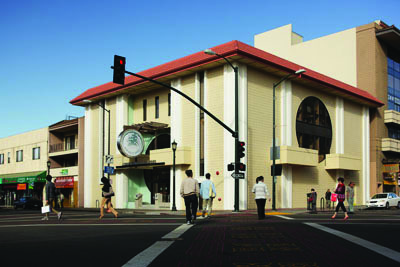by Suzanne Potter
California lawmakers are considering a range of options to combat a rise over the last two years of felony retail theft – large-scale shoplifting – and held the latest in a series of hearings in West Hollywood on Friday. The State Assembly Select Committee on Retail Theft heard from residents, business owners and social-justice groups.
Tinisch Hollins, executive director of the nonprofit Californians for Safety and Justice, said everyone agreed on one thing.
“The retailers and folks who patronize stores deserve safety. People should be able to do business. That’s not up for debate,” Hollins said, “But relying on incarceration, jail and prison and arrests are not going to get us out of this problem, because it’s far more complex.”
Some in law enforcement have suggested in recent years that Proposition 47, passed a decade ago, has contributed to the uptick. Prop 47 raised the threshold for felony theft to $950 – so if the amount stolen is more than that, it would be a felony with jail time.
The law addressed overcrowding in the jails and has saved $750 million since 2015 in incarceration costs, diverting it to programs that address drivers of crime, including poverty, addiction and mental illness.
Hollins says fear-mongering should not be allowed to undermine criminal justice reform and notes that just 8 percent of people who participate in Prop 47-funded programs end up back behind bars.
“There are many who are really capitalizing off the fact that people are scared that businesses are being impacted, and that there’s this perception that there’s lawlessness, but the truth is, there are ways for us to intervene in this crisis, and we should be using them,” Hollins said.
Gov. Gavin Newsom has proposed cracking down on resellers of stolen goods and clarifying that law enforcement can combine the value of multiple thefts to reach the threshold for felony grand theft.
Community health leaders press Congress for more stable funding
Community Health Center leaders are pleading with Congress to pass a budget deal by March 8 to avoid a partial government shutdown – arguing that the uncertainty around funding makes it difficult to function.

Funding issues are expected to dominate discussion at the annual National Association of Community Health Centers Policy and Issues Forum in Washington D.C. – which starts today.
Kimberly Chang is a family physician at Asian Health Services in Oakland, who also serves as the Speaker of the House for the NACHC’s executive board.
“Well, when you don’t have a stable funding path and you’re relying on Continuing Resolutions,” said Chang, “it’s so challenging to make plans for hiring additional staff and employ those initiatives to support the increased demand for our services. And we would never turn a patient away.”
Community Health Centers are clinics that see patients no matter their insurance status or ability to pay.
They also face a shortage of primary care doctors, plus inflation and a fluctuating patient population as people are dropped from the Medicaid rolls after the pandemic.
The U.S. House and Senate both have bills that would increase funding for the centers, but they’re tied up in budget negotiations that have dragged on since last fall.
Paloma Hernández is president and CEO at Urban Health Plan, and is the chair of the NACHC’s board. She pointed out that Community Health Centers are the country’s largest primary care network.
“Many of us provide oral health, behavioral health, pharmacy services, specialty services,” said Hernandez, “and then, we provide lots of related services that address some of the social drivers of health.”
Community Health Centers helped more than 31 million people in 2022 – at 15,000 clinics that employ close to 300,000 people.
California alone has more than 2,300 clinics, serving 5.6 million patients.



